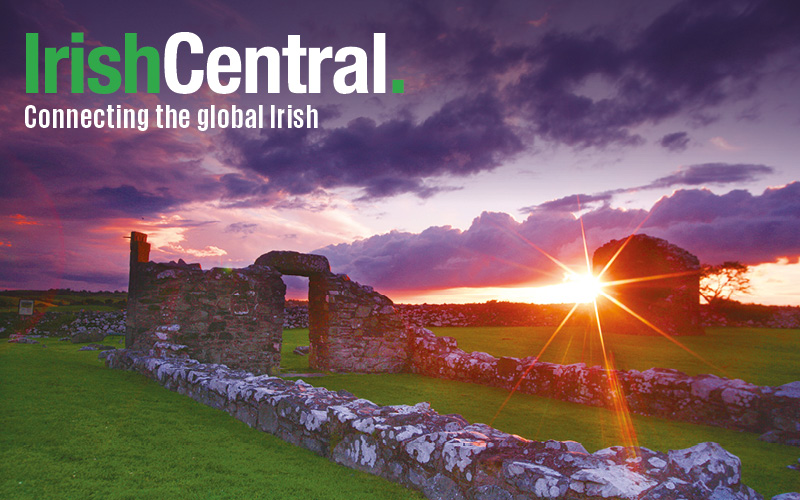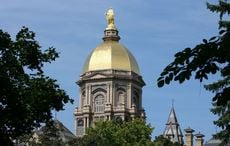The Grand Old Lady of Stephen’s Green as Shelbourne Hotel is affectionately known has been witness to many key events in the trajectory of modern Irish history.
From its inception in 1824 to recent times, the life of ‘Shel’ has run concurrently with the life of Dublin and even Ireland. Indeed, some of the most legendary and famous people from all walks of life have passed through its doors or stayed there. During 1916 Irish Rising hotel was garrisoned by the British army. Later in 1922, it was garrisoned by the army of new Free State. The Shelbourne is also the historic location of the drafting of first Constitution of Ireland.
More recently, the hotel became an enclave where many of Ireland’s famous literary and musical greats socialized. Regulars included Ireland’s famous tenor Count John McCormack, musical composer Seán Ó Riada, poets Patrick Kavanagh and Seamus Heaney, and playwright Brendan Behan, among others. In fact, The Chieftains, one of Ireland’s most famous musical groups was formed after Seán Ó Riada suggested a name to musician Paddy Moloney in Shelbourne’s Horseshoe Bar.
The original structure consisted of four brick houses and was bought by Martin Burke in 1824. Burke, a Tipperary man, leased three houses, numbers 27, 28, and 29 in St. Stephen’s Green considered the most illustrious location of the city “to woo genteel custom who wanted solid, comfortable and serviceable accommodation at a fashionable address”.
The hotel originally was simply called Burke’s, but its owner decided it needed a grander title. Burke chose the name after second Earl of Shelburne taking artistic license and adding an o to word so that his new establishment was now spelled Shelbourne.
By 1866 after it changed hands to new owners Messrs. Jury, Cotton and Goodman Shelbourne was re-built by Irish Victorian architect John McCurdy. The new edifice took 10 months to complete and was considered as majestic and grand as any of great hotels in London or Paris. In style exterior architecture is Renaissance. The walls are red brick and principal exteriors are of Portland stone. At entrance porch there overhangs a glass canopy. The entire façade is crossbanded with stucco painted cream.
Four granite pedestals hold life-sized bronze figures of Egyptian princesses and two Nubian slave girls, holding torches and standing as guards in front of the hotel. These icons of Shelbourne were known by Dublin wags at the time as last four virgins in Dublin. The interior decoration was in the fashionable Victorian style and set off by sumptuous wall hangings and oriental rugs.
From the beginning, Shelbourne’s policy for guests focused on good quality and a high standard of service. In these early years of history of the hotel, and right through to 1957, Shelbourne was the fashionable venue of wealthy and gentry classes. In 1824 English novelist and satirist William Makepeace Thackeray (1811-1863) whose best-known novel was Vanity Fair wrote about the hotel in his work Irish Sketch Book:
“Presently car stops before an extremely big red house, in that extremely large square, Stephen’s Green… The hotel to which I had been directed is a respectable old edifice…”
The novelist George Moore (1852-1933) gives us an insight into the hotel as an elegant social venue for high society of Dublin in years leading up to Great War. The Shelbourne plays an active role in Moore’s narrative where the character of Mrs. Barton uses private rooms of the hotel to entertain eligible young men as prospective husbands for her daughter. Although Moore’s work is fictional it did reflect life at the time.
By 1904, a General Manager George Olden was appointed. During Olden’s tenure installation of a lift and telephone augmented prestige of hotel. The hotel’s staff many of whom were European was regarded as most highly trained in culinary skills and hospitality. Not surprisingly hotel’s success grew. The cream of Dublin’s society came in their droves between 1906 and 1913, arriving by car or even by tram. These included the arrival of several international visitors from America, Japan, and even Australia.
In 1922 after War of Independence committee appointed to draft new Irish Constitution (Bunreacht na hÉireann) met in a sitting-room in number 122 of Shelbourne hotel. The room, now known as Constitution Suite, overlooks St Stephen’s Green and is hotel’s most famous banqueting room. Here under the chairmanship of Michael Collins Irish Constitution was drafted, thus, Irish Free State became effective.
From mid 1950s and with addition of a new ballroom, Shelbourne continued to attract high profile guests. The hotel was renowned for her relationship with wealthy and famous clientele. Indeed hotel’s guest list around this time reads like who’s who of an A-list Hollywood party: James Cagney, Maureen O’Hara, John Wayne, Stan Laurel, Oliver Hardy, Elizabeth Taylor, Richard Burton, Rock Hudson, Burl Ives, Orsen Welles, Robert Taylor and Rita Hayworth.

The Shelbourne Hotel, St Stephen’s Green, Dublin
By 1960s after yet another change of hands, Shelbourne became a favorite with one of Europe’s most esteemed couples, Princess Grace of Monaco and her husband Prince Ranier. The Grimaldis were particularly fond of view of St. Stephen’s Green from room 270, and this became their usual room. In fact, room was known thereafter as Princess Grace Suite.
John F. Kennedy and his wife Jacqueline first came to Shelbourne in 1958. They stayed in Tonga Suite which was named after Queen Salute of Tonga. Just a few months prior to his assassination Kennedy returned to Shelbourne as president of United States on an official visit.
The present head concierge of Shelbourne Denis O’Brien describes how Oliver Hardy, robustly built American actor and comedian got stuck in a chair. When staff managed to dislodge his ample frame from chair they found that Hardy’s trousers were ripped. Of course, within a short time, resourceful staff had them repaired. Another time American actor James Cagney danced on piano. Then there was the incident of Peter O’ Toole bathing in champagne.
The Shelbourne has also been subject to two historical treatises. The first was published in 1951 by writer Elizabeth Bowen. Entitled simply The Shelbourne Hotel, Bowen’s book chronicles hotel’s history from its foundation until World War II. The other history of the hotel is more recent. Michael O’Sullivan and Bernardine O’Neill co-authored The Shelbourne and its People, (1999). The writers drew on hotel’s archives to chart their insightful history. O’Sullivan is also curator of Shelbourne’s new museum which is a repository of historical artifacts, letters, menus, and other items. These beautifully displayed and meticulously chosen objects are a delight to view. More importantly, they are valuable for their significance as a catalog of the sociological history of the hotel and indeed of Ireland.
* Originally published in July 2013 on Ireland of the Welcomes.




Comments